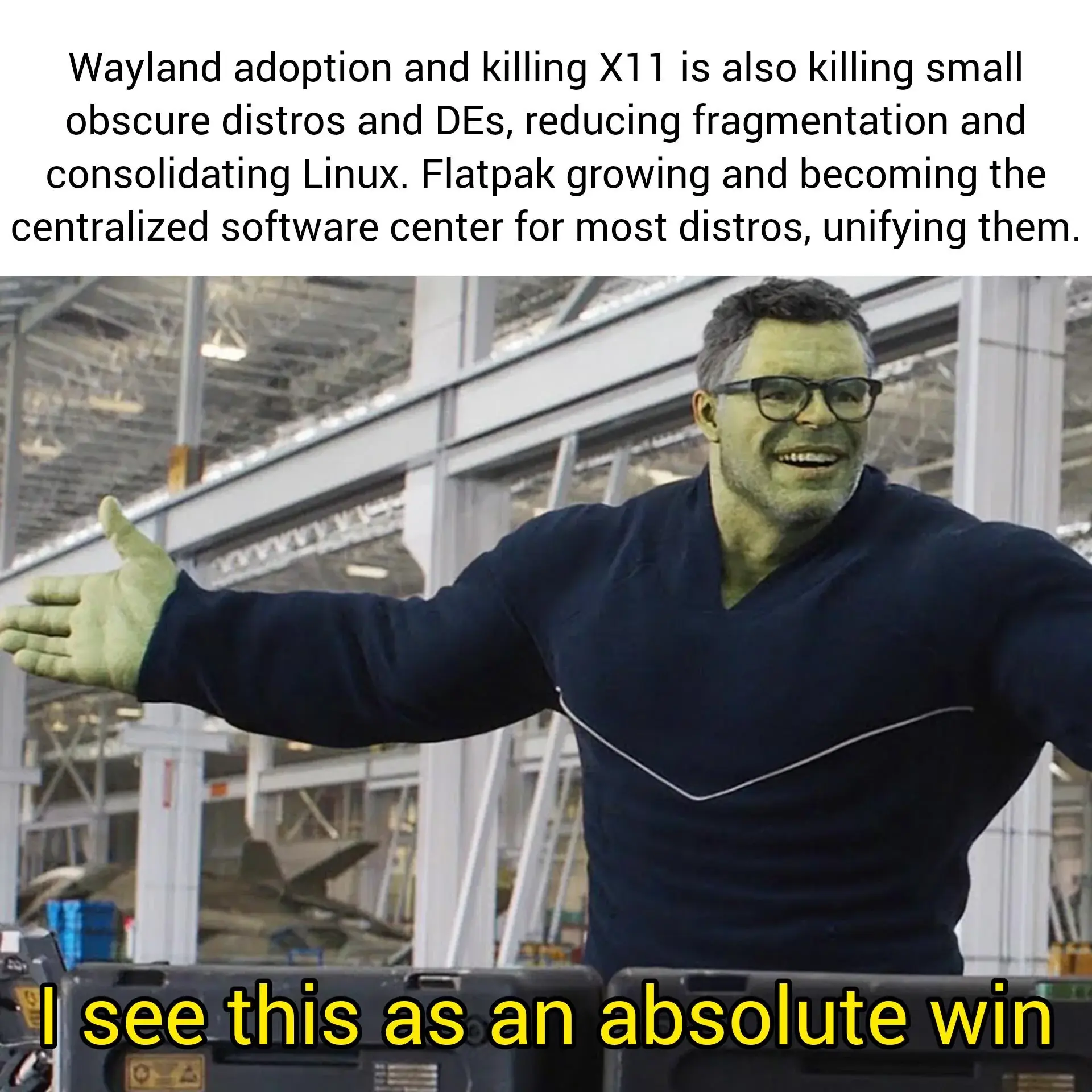this post was submitted on 12 Jan 2024
295 points (81.3% liked)
linuxmemes
20880 readers
6 users here now
I use Arch btw
Sister communities:
- LemmyMemes: Memes
- LemmyShitpost: Anything and everything goes.
- RISA: Star Trek memes and shitposts
Community rules
- Follow the site-wide rules and code of conduct
- Be civil
- Post Linux-related content
- No recent reposts
Please report posts and comments that break these rules!
founded 1 year ago
MODERATORS
you are viewing a single comment's thread
view the rest of the comments
view the rest of the comments

Support for HDR, variable refresh rate, direct draw and battery improvements sound like a very good list to have, other than the overall leaner build. You personally not caring about it doesn't change the fact that it's good to not stagnate when it comes to things like this.
VFR 🤨... I mean, does anyone actually use that? It flopped for video content, I seriously doubt anyone is gonna use that on a PC.
DirectDraw is an MS specific thing, part of DirectX. How does that fit into Wayland?
The second, I would actually LOVE to get in any frame server, X or Wayland, but that will most probably never happen.
Variable refresh rate has become the de facto standard of modern gaming now. They aren't referring to the direct draw API, but the fact that Wayland does not have extra baggage to draw to the screen through a display server. Wayland just draws to the screen directly, saving time and performance.
VRR is fantastic for games, I really notice the difference and I use Wayland because of it.
The downside to that is (from my understanding) Wayland forces some form of Vsync on everything, so if you don't have a VRR monitor then games can become very stuttery and have noticeable input lag. There is an option to "force lowest latency" which supposedly allows screen tearing for things like games, though I didn't test how well it worked myself.
If people are interested in experimenting, then VRRTest is a great utility to see what VRR is doing and to test various settings.